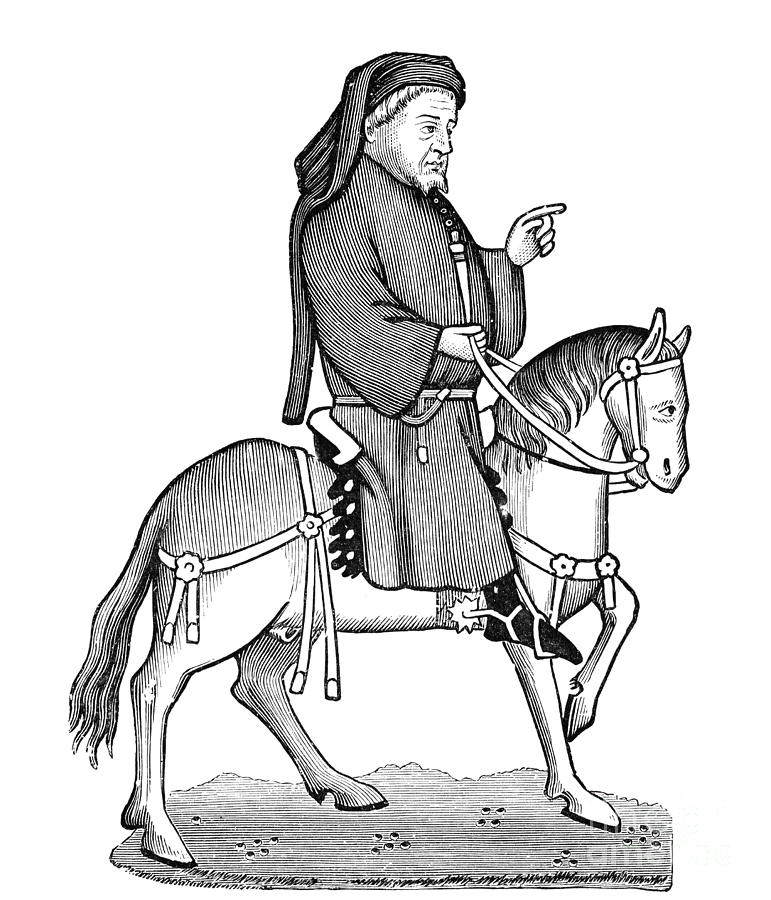

In the Ellesmere manuscript the Doctor is shown in a purple surcoat and stockings, with a blue hood trimmed with white fur.

But he was himself thrifty and abstemious, with a touch of miserliness, and the tendency to despise theological studies, which was supposed, down to the days of Sir Thomas Browne, who wrote his Keligio Medici as a protest, to characterize his profession. He must have been a rich man to take the degree of Doctor, which involved great expenses in fees, presents, and feasting. Chaucer's physician to attain the degree of Doctor of Physic must have mastered all this lore, besides what was known of anatomy and other medical studies, properly so called. These remedies were directed, in the case of disease, to restoring the balance of the four qualities of hot, cold, dry, and moist. The skill of the astrologer-physician would be exercised in calculating the hours when the balance of contending influences would be most favourable to his patient, and choosing these for the application of his remedies. Complications were introduced by the sign under which the patient was born, which was thought to rule his destiny through life by the sign in the ascendant when his illness began, etc., etc. Knowledge of these relations was thought so essential that a picture illustrating them was placed in all the early printed Books of Hours or prayer books for lay use, and a physician was supposed to choose the part of the body at which to bleed a patient according to the sign then in the ascendant.

In his day every part of the human body was supposed to be under the domination of one of the twelve Signs or Constellations (see Chaucer's Astrology), Aries governing the head, Taurus the neck, etc. Chaucer's character of his Doctor of Physic introduces us to a world of thought so different from our own that it would need many pages to offer an adequate commentary on it.


 0 kommentar(er)
0 kommentar(er)
